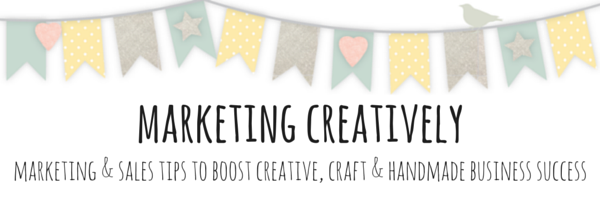Set up as a predominately social media platform, in recent years craft sellers have taken to it in droves to promote their craft, creative & handmade businesses.
However, with the recent algorithm changes meaning much reduced organic reach for content & updates, this has meant many users have seen less visibility for their businesses. However we also seem to have forgotten that to be successful on Facebook we need to pay homage to the original social aspect of the platform.
Long gone are the days where you could post your creations, name your price and how to order. Combine this with modern marketing theory focused on relationship building as opposed to sales message driven and here's 10 tops tips on how to successfully sell on Facebook now.
1. Buying fans and followers does not guarantee you'll get sales & facebook likes don't equal sales or profit. Concentrate on growing your business & shop with likers that really like, that will comment, engage and share your updates. This will ensure these 'true' likers will continue to see your updates and also enables you to benefit from 'social proof' ie your likers recommending you to others through their interaction with your content. Agreed your page likes may be fewer but what's the point of 1000 likers who like and run and aren't interested enough to want to hear from you and potentially buy? Encourage your likers to like, follow and get notifcations from you so they always see your latest news.
2. Facebook wants to ensure it's users have a quality experience whilst on the site. It doesn't want users to be continually spammed with untargeted, irrelevant, opportunistic sales messages - buy me, look at me. Concentrate on crafting your posts full of content that is useful, informative, interesting or entertaining to your ideal customer. Position yourself as an authority base for everything to do your chosen craft. Out of every 10 status updates you make, 8 of them should be education or entertainment based and just 2 of them should be sales oriented. Remember, people need to know like and trust you before they will purchase - you cannot build this by solely posting sales content messages continually. Do you buy from anyone you haven't felt a resonance with or done some background research on or have a feel for?
3. Always drive your Facebook traffic back to your website, blog or online shop. If Facebook went down the pan tomorrow or changed it's thinking on how it disseminates information you could lose all your potential customers or business if you rely solely on it. With every status update provide a hyperlink back to your main sales site (you do have one, don't you?) where the reader can gain more information, read about you and learn more about your products and services and what's in it for them to buy from you.
4. Ensure you have a subscriber opt in offer to your mailing list on your Facebook page - this enables you to collect email addresses from those that truly wish to express and interest in and hear more from you. In conjunction with #3 above, collecting email addresses ensures you have control over when, how and what you communicate with your potential customers. Even better, have an opt in offer (discount, tutorial, exclusive content) to tempt potential customers to give their email in exchange for their email address that will benefit them.
5. Ensure your status updates have clear, in focus, professional looking, emotive and engaging photographs that will make potential customers stop, look, like, share, comment and read more. There are lots of online free photo editing tools such as Picmonkey and Canva where you can edit your photos, watermark, overlay text and give them a professional look and feel.
6. Invite questions with your Facebook status updates - always finish your update with a clear call to action for the potential customer to respond to. And make sure you take the time to respond to their comments too! This is how two way relationships are built.
7. Post at least once a day on your Facebook page, preferably two or three times. Remember to post educational/informative content more than sales messages to maximise the opportunity for relationship building. You could try tips, tutorials, behind the scenes info, customer focus, facts & figures or a funny story. If your content isn't being seen by your prospective customers, it may mean Facebook has deemed it irrelevant and not interesting or quality enough to raise it's hand above all the other content vying for your customers attention.
8. Be patient. Building relationships takes time. It is estimated it takes between 5 - 27 times of potential customers seeing you and your products before they may even consider buying. Your time and efforts will take time to be rewarded as there's no such thing as overnight success. Building trust and credibility are the all important factors to concentrate on in using social media.
9. Remember people buy based on how products make them feel - not necessarily because they need or want them. We all desire to make purchases to make us 'feel' a certain way - do you clearly communicate how your products can make someone feel as opposed to the physical attributes or the benefits of the product?
10. Check your Facebook insights regularly. They are a mine of information regarding who's seeing your content, how well it's performing, what types of posts are favoured more by your audience (to enable you to concentrate more on this type of post). You can tell when the best time to post updates, the demographics of your fan base, the days of the week favoured and where else your page traffic is coming from. Use them to inform your future actions.

.png)
